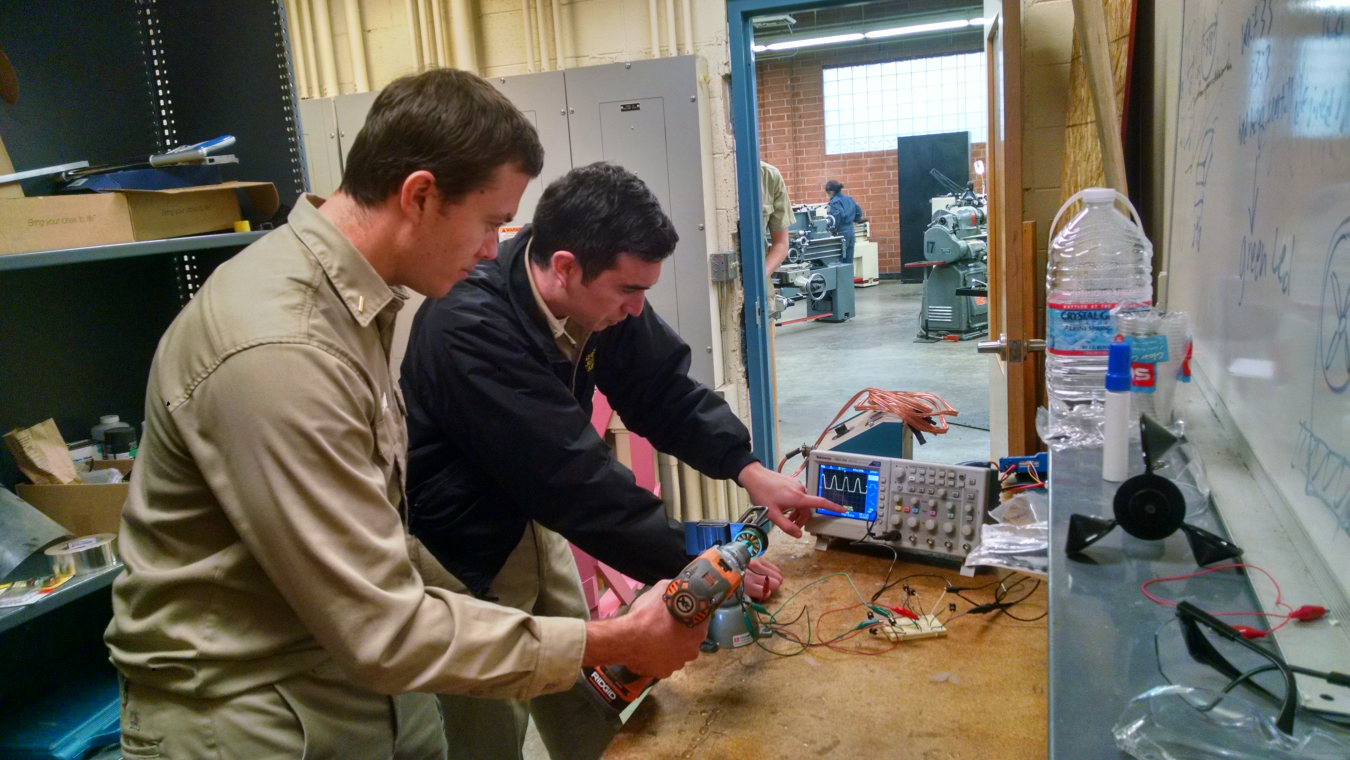Team roster: David Chang, Business Administration/International Business and Logistics; Nathan Griffin, Business Administration/International Business and Logistics; Jordan Mootz, Business Administration/International Business and Logistics; Franklin Riley, Business Administration/International Business and Logistics; Charles Wiswall, Business Administration/International Business and Logistics; Thomas Herburger, Global Studies and Maritime Affairs; Cameron Leahy, Global Studies and Maritime Affairs
David Buckley, Mechanical Engineering; Zachary Domagala, Mechanical Engineering, USCG 3rd A/E License; Sarah McDonald, Mechanical Engineering; Matthew Richards, Mechanical Engineering; Alec Safreno, Mechanical Engineering; Jacob Steiner, Mechanical Engineering; Principal Investigator: Dr. Thomas Nordenholz, Mechanical Engineering; Co-Principal Investigator: Dr. Khalid Bachkar, International Business and Logistics; Co-Principal Investigator: Dr. Ryan Wade Dudley, Maritime Policy and Management
Sarah McDonald and Zach Domagala using blade design software to develop their teams turbine blades.

Alec Safreno and David Buckley test motors in their turbine generator selection process. They are looking for a motor with the perfect characteristics.

Alec Safreno rebuilding part of his team's wind tunnel. The California Maritime team is adding a larger motor to their wind tunnel in order to achieve higher testing wind speeds.
Cal Maritime Team leader David Buckley describes and demonstrates the design and operation of the teams' wind turbine in the student-built wind tunnel.
View from above as Cal Maritime students demonstrate describe their project to Cal Maritime Administration and Faculty.
TEAM NAME:
WHY WIND?
As students at the California Maritime Academy, team members are focused on emerging from college ready to make real contributions in their chosen fields. Academy students are encouraged to consider themselves global citizens and to participate in solutions for global issues. The need for global renewable energy implementation is apparent, and wind energy represents a compelling field where real solutions are taking place.
PROJECT DESCRIPTION:
California Maritime Academy is designing and building a three-blade, horizontal access wind turbine that uses a direct drive configuration to generate three-phase alternating current. The rectification and control system will perform passive rectification and, most likely, use a microcontroller to control a boost/buck system and an electronic brake. The turbine’s load will consist of a pump moving water through a scale-model reverse-osmosis unit, which illustrates the team’s business model product, while displaying power output and other turbine data and performing real-time calculations related to the team’s business model.
GAME PLAN:
California Maritime Academy is focusing on a business plan to provide wind-powered water desalination to coastal, water-stressed communities. Using a modular approach, and by sourcing decommissioned turbines in the 100kW range, the team plans to provide “pop-up” wind farms in coastal locations to provide water system relief in coastal areas experiencing drought, disaster, or otherwise unpredictable water supply conditions.
TEAM STRENGTH:
The team feels eager and confident in most aspects of technical design, particularly blade design—in which they have a lot of experienced faculty members. The team has a good process that allows them to quickly iterate designs and prototype blades until they arrive at an iteration that is most successful.
TEAM HURDLES:
According to the team, each contest is not without its difficulties. While a bonus challenge, selecting the load proved to be one of the most debated topics among the team. Arriving at the scale and precise function of the desalination unit was discussed for multiple weeks before a final concept was agreed upon. In addition, finding a good market proved difficult because its application relies on specific populations and certain conditions. In addition, finding the specifics of the deployment strategy was highly dependent on the market, but the team could circumvent stringent policy by being in a smaller turbine range. The business and deployment contests forced them to envision a creative business plan to an industry that is already very creative, which forced the team to carefully consider their plan and work as a team to refine their ideas.
The team’s largest challenge comes from the cases of the technical design and the bonus challenge. A significant portion of the competition will be determined by the team’s ability to design, build, and run complex electronics and control systems. The engineering team is comprised solely of mechanical engineers, so they have limited exposure to electronics work at this level. All of their output in this area represents new ground for them, and they will have no guidance from electrical engineering faculty. That being said, the school has done well in this area in the past, and team members look forward to demonstrating their ability to perform well outside of their comfort zone.
TEAM TAKEAWAY:
The most important thing the team is getting out of this competition as students is the experience and confidence that comes from working as a multidisciplinary team and challenging themselves to perform at a high level within that. Additionally, exposure to all facets of the wind industry in such a rigorous and challenging format is invaluable. Many of the team’s members are coming into the competition with no prior experience in the field, and they’re learning a lot about this industry and the opportunities that exist within individual disciplines.

